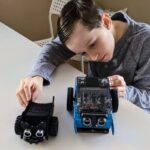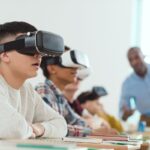Museums and maker spaces are a big deal in the STEM education space right now. They provide immersive, hands-on experiences outside the traditional classroom.
In these informal settings, you’re free to scout scientific concepts and inventions at your own pace, which can be incredibly effective for understanding complex STEM topics. They’re inclusive spaces where anyone, regardless of age or expertise, can learn and innovate together.
Going to interactive exhibits and using tools like 3D printers help students gain a practical understanding of STEM, changing what is taught in formal education.
Key Takeaways:
- Informal learning environments are key venues for engaging with STEM outside traditional classrooms.
- These settings cater to diverse individuals who like learning, offering interactive learning experiences.
- Interact with real-world examples and hands-on activities related to STEM concepts.
Table of Contents
What is Informal Learning About
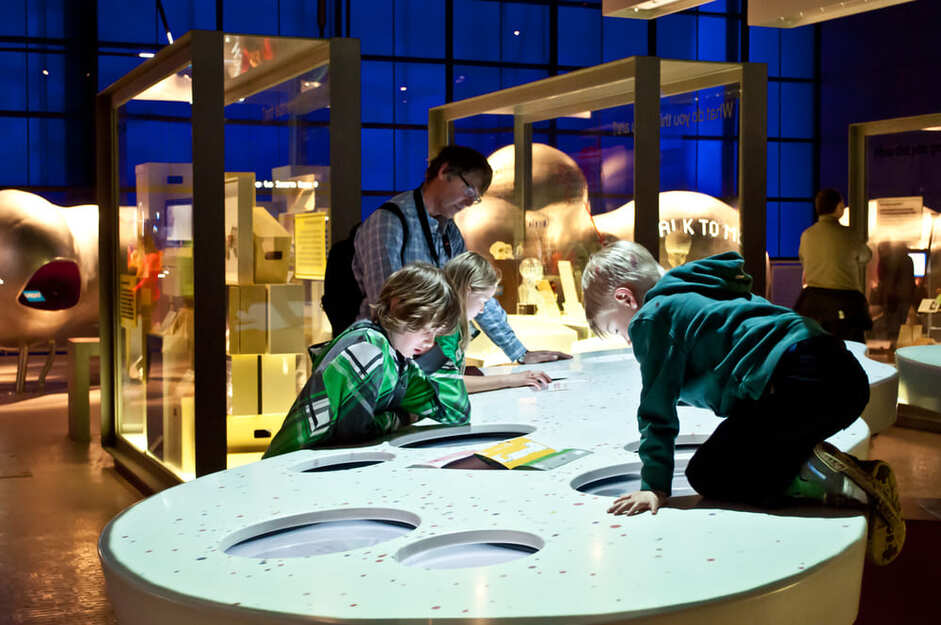
When you learn beyond traditional classrooms, you’re stepping into an exhilarating space where your curiosity leads the way in uncovering new knowledge.
Differentiating Between Informal and Formal Learning
Formal learning typically takes place in structured educational systems like schools, where curricula are set, and learning is often led by teachers.
On the flip side of this, informal learning happens outside these traditional settings.
Think museums, maker spaces, or even your own garden. It’s all about free-choice learning—you pursue knowledge based on your interests. There’s no pressure, so you get to learn at your own pace.
While formal settings have a predefined set of learning outcomes, informal environments let you adjust and understand without pressure.
Formal vs. Informal Learning
| Aspect | Formal Learning | Informal Learning |
|---|---|---|
| Location | In classrooms | Museums, parks, online platforms |
| Learning Process | Teacher-led, structured | Learner-led, flexible |
| Assessment | Tests, grades | Self-assessment, observations |
Theories and Frameworks of Learning in Informal Settings
Your experiences in these relaxed environments are informed by learning theories. One critical theory is constructivism, which proposes that you build your own understanding and knowledge by experiencing things and reflecting on those experiences.
Informal settings often allow you to engage cognitively while sparking conceptual learning, aiding in the development of content knowledge.
Learning science informs the creation of these environments to maximize educational experiences without the formal curriculum confines.
Key Learning Theories Influencing Informal Environments
- Constructivism
- Situated Learning
- Experiential Learning
Assessment Techniques in Informal Learning
Measuring your learning gains in informal settings can be tricky since there aren’t exams or grades like in school. However, assessment is still important to validate these experiences.
Methods might include visitor studies, interviews, or observing your behavior and interactions. For educators, assessing learning outcomes involves spotting changes in your content knowledge or watching how you apply new concepts.
Examples of Assessment in Informal Learning
- Self-guided reflections
- Surveys and interviews
- Observational studies
For some fun STEM activities at home, please check out our article with an easy STEM activity setup your kids will love.
The Role of Museums in STEM Education
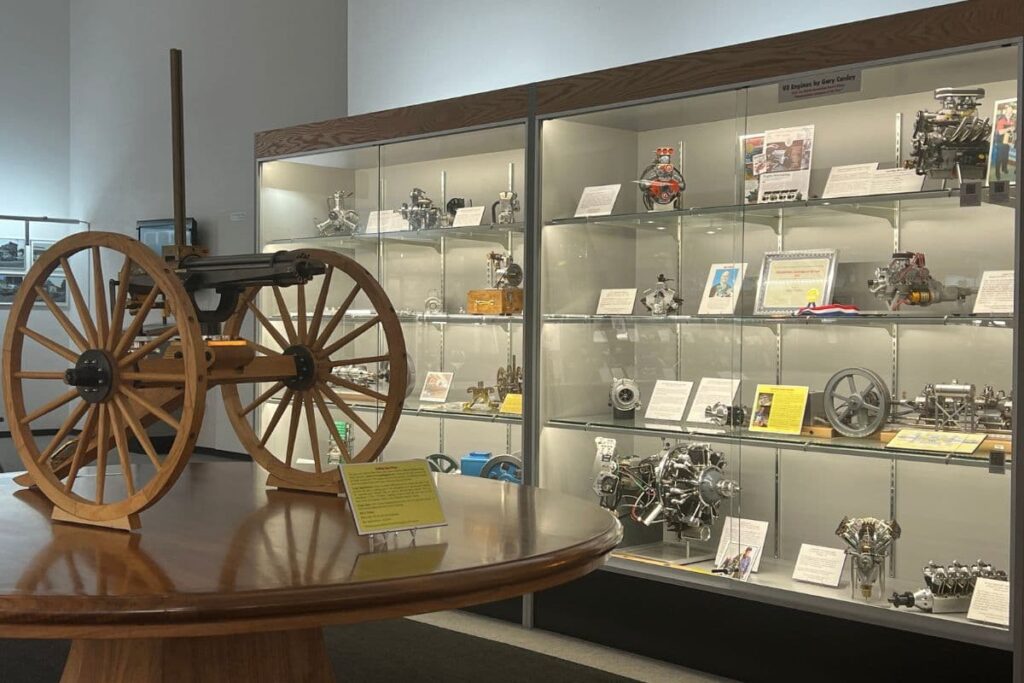
Museum Education Versus Classroom Teaching
Let’s compare museum education to traditional classroom teaching.
It’s like looking at two sides of the same coin. In the museum, you’re not bound by a strict syllabus. Instead, you’ve got the freedom to pursue your interests, sparking that inner drive for science learning.
Museums use more inquiry-based activities, allowing you to learn at your own pace and follow your curiosity, which can be a refreshing change from the structured, often curriculum-driven nature of school teaching.
Besides all the visual stimulation, this is one of the big reasons that museums are actually fun, and our traditional classroom can be tedious.
Exhibit Design and the Museum Experience
When you enter a museum, each exhibit is made with a person like you in mind.
From interactive displays to thoughtfully presented artifacts, exhibit design is central to your museum experience.
STEM Education Guide Pro-Tip: To enhance learning in STEM subjects, designers aim to craft immersive experiences that blend education with engagement. Prioritize experiences that are both informative and interactive to make the most of your learning journey.
Programs and Activities for Science Learning
Museums have a ton of programs and activities made to enhance your science learning. You might find yourself in a maker space building a robot, participating in a science lab, or engaging with experts during science talks.
These activities encourage hands-on learning and collaboration, vital components of museum education.
By actively participating and not just going through the motions, you foster interest and self-sustained learning that can ignite a lasting passion for STEM fields.
Makerspaces and Maker Movement
Cultivating Communities of Practice
In makerspaces, you’ll find a buzzing, community-oriented environment where learning and sharing go hand in hand. Communities of practice thrive here, allowing you to interact with fellow makers who bring their expertise and experiences to the table.
Whether it’s a local museum-backed project or a community-based organization, the key is participation. You aren’t just a spectator; you’re a contributor.
The Relationship Between Making and Learning
Research shows that making and learning are closely intertwined. In the context of STEM education, maker spaces are where you can get your hands dirty, so to speak.
Tinkering with tools and materials, you learn through trial and error, problem-solving, and designing. Makerspaces allow you to transform your conceptual knowledge into practical applications.
Design Principles in Makerspaces
Every maker space has its unique charm, but here are some common design principles:
- Accessibility: Spaces are equipped with various materials and tools that are easily accessible to you.
- Flexibility: You’ll find spaces that can adapt a bunch activities and projects.
- Visibility: Observing other’s work and displaying their projects creates an open atmosphere that invites curiosity and learning.
Remember, the heart behind makerspaces is the maker movement—a push to empower you to create, learn, and share in more hands-on and collaborative ways.
Impact on Diverse Learner Profiles
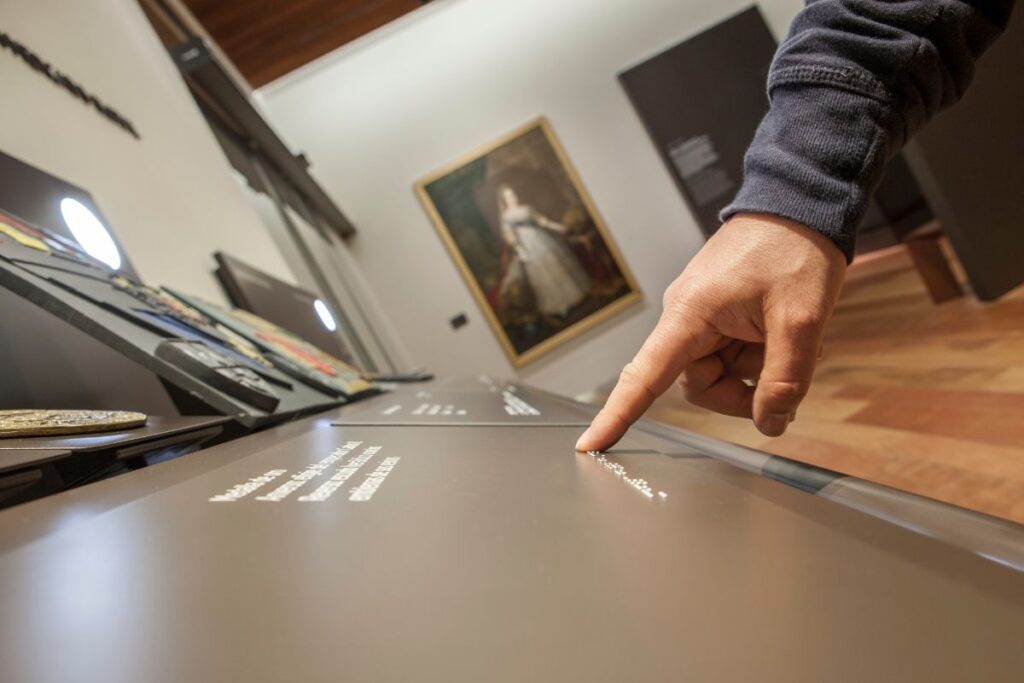
Inclusivity and Accessibility in Informal Learning Spaces
You might not realize it, but your local science center or art museum plays a critical role in designing spaces that welcome all sorts of visitors.
For instance, think of venues with tactile exhibits for the visually impaired or materials in multiple languages to bridge communication gaps.
These subtle design choices make a world of difference in ensuring everyone can hop aboard the STEM learning train, regardless of their background.
Common features for accessibility
You might not of noticed these but you’ll be able to spot them the next time your there.
- Braille labels on exhibits.
- Wheelchair-friendly layouts.
- Sign language interpreters or video guides.
This isn’t just about physical space, though. It’s also about the ethos of the place.
The best informal learning environments actively build diversity into their programs, making sure there’s something that resonates with each visitor’s cultural heritage or personal interests.
Engaging Underrepresented Groups in STEM
It can be tough to get into STEM if you don’t see anyone like you in the field.
Museums and makerspaces are busting these barriers by specifically tailoring programs to fit the needs of underrepresented groups, fostering a sense of belonging and sparking curiosity.
Here’s what you can expect:
- Hands-on workshops – Experimentation isn’t just for the pros. With hands-on participation, these places give you a feel for what being a scientist or engineer is really like.
- Mentorship programs – Meeting real-life role models from similar backgrounds can inspire you to consider opportunities you might never have thought possible.
Regularly spending time in dynamic and diverse STEM communities can immerse you in a culture that redefines learning and excellence in these fields.
STEM Education Guide Pro-Tip: Stay active in these spaces to become part of a community that fosters innovation and growth in STEM.
Integrating Informal Learning in Formal Education
If you’ve been to a museum or maker space, you’ve seen the excitement on a kid’s face when they’re exploring a hands-on exhibit at a science museum or building something cool in a maker space.
I remember taking my oldest son to the Air and Space Museum in San Diego, California, for the first time. Just like any kid, he was into planes and space. Seeing his face light up going through there is one of our best memories!
Now, let’s talk about how you can merge these worlds to boost STEM education.
Bridging Informal and Formal Learning Experiences
To create a seamless blend of informal and formal learning, start by aligning the curriculum with the resources and experiences provided by museums or makerspaces. It’s all about designing activities that reflect the learning outcomes you’re aiming for in your classroom.
- Develop a plan that outlines how each visit enhances specific parts of your curriculum. Making a plan is one of the most important steps, so don’t skip this.
- Bring artifacts or tools from informal environments into the classroom to spark discussion and reflection.
Collaboration Between Educators and Informal Institutions
Strong partnerships between educators and informal learning environments can lead to exciting educational opportunities.
Here’s a cool way to ensure you’re getting the most out of this collaboration:
- Reach out to the staff at these informal institutions to discuss potential joint projects.
- Design field trips and activities that support the curriculum and cater to your student’s interests.
- Capitalize on the knowledge of museum educators or makerspace facilitators to enrich the learning experiences.
- After each encounter with an informal environment, gather feedback to refine and improve future integration.
Exploring the Variety of Informal Learning Environments
Beyond Museums and Makerspaces
When you think of learning outside of school, museums might come to mind first. But there are many other places to explore too. Each one provides special experiences related to different parts of STEM.
| Venue | Highlights | Benefits |
|---|---|---|
| Makerspaces | Hubs of creativity for hands-on experience with tools and materials. | Enhances practical skills and problem-solving in engineering and technology. |
| Libraries | Offer a range of STEM resources including books and access to technology like 3D printers. | Provides a wealth of information and access to cutting-edge technology for learning. |
| Aquariums | Feature vast displays of aquatic life to learn about marine biology and ecosystems. | Offers a unique perspective on marine life, fostering a deeper understanding of oceanography. |
| Zoos | Vital for conservation and education, providing insights into biology and environmental science. | Encourages conservation awareness and hands-on learning in biology and ecology. |
| Botanical Gardens | Act as living libraries of plant species to inspect botany and ecology. | Facilitates learning about plant diversity, conservation, and the role of technology in ecology. |
| Nature Centers | Focus on the outdoors, providing resources for environmental science, ecology, and geology. | Promotes experiential learning in natural settings, enhancing understanding of earth sciences. |
Facilitation and Expertise
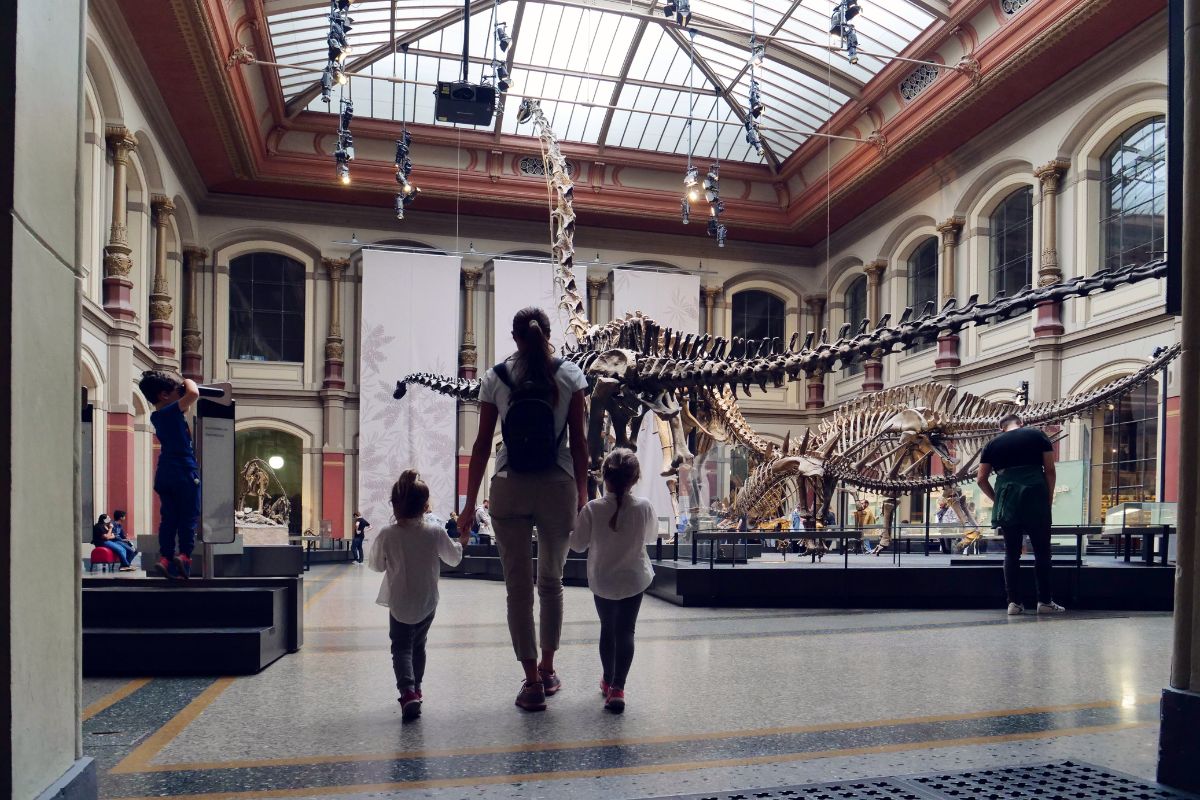
The Importance of Skilled Practitioners
Facilitators in informal science education play a unique role compared to traditional teachers. Educating in a museum or maker space means acting more as a guide than an instructor.
STEM Education Guide Pro-Tip: Ensure your facilitators excel in inquiry-based teaching. They should foster a learning environment where curiosity is encouraged and discovery is learner-led, allowing participants to learn at their own pace.
They build an environment where exploration is the norm, and failure is just another stepping stone to knowledge.
The facilitation style in these spaces is less about direct instruction and more about giving you the tools and support to learn on your own terms.
Skill Set in Makerspaces
Practitioners need a diverse skill set, including:
- Comfort with both digital and physical facilitation.
- Ability to instruct on using advanced technology like 3D printers.
- Knowledge of discussing material properties and other hands-on skills. You might need to do some homework of your own. Think about questions students will come up with and find the answer before they ask.
Research and Future Directions
Emerging Trends in Free-Choice Learning Research
You’ve probably noticed that places like science centers and makerspaces are where you call the shots on what you learn.
This is free-choice learning, and it’s hot in research right now.
Scholars are designing experiments that dissect how you learn when you’re steering the ship.
You’re not just a visitor; you’re a participant guiding your own learning journey.
- Design Experiments: These are specific, crafted research setups where your interaction with the exhibits is observed and tweaked in real-time.
- Interpretation: Researchers are looking at how you interpret information and how this shapes your understanding of STEM concepts.
Case Studies and Comparative Research
Researchers are collecting snapshots of informal STEM education from all over—think libraries, museums, and even your home.
Then, they put these snapshots together to see what stands out.
- Comparative Case Study: By looking across different learning settings, you get a clearer picture of what’s effective and what’s not.
- Learning Experiences: These studies dive into your actual experiences, documenting how you learn, the questions you ask, and the tools you use.
Frequently Asked Questions
How do kids benefit from hands-on experiences at science museums?
When your kid gets hands-on at a science museum, they’re not just having fun – they’re boosting their curiosity and problem-solving skills.
Can makerspaces really help with learning science and math?
Absolutely. Makerspaces are like gyms for the brain. Here, by designing, building, and experimenting, you make mistakes and learn from them.
In what ways do aquariums and zoos boost understanding of biology?
Aquariums and zoos bring biology to life. You see ecosystems in action and understand animal behavior up-close. It’s one thing to read about a habitat, it’s another to watch animals live within them.
What’s the impact of after-school programs on math and science achievements?
After-school programs are power-ups for your learning. They provide extra time to practice and apply math and science concepts in new and interesting contexts, which can help solidify your knowledge.
How do interactive exhibits enhance STEM education for children?
Interactive exhibits in STEM turn you from a passive observer to an active participant. You get to experiment with scientific concepts and learn outcomes firsthand, which can make STEM subjects more engaging and memorable.
Why are school field trips to tech exhibits important in learning computer science?
Tech exhibits show you the cutting edges of tech. When you see where computing can take you, it can light a spark. These trips can make computer science concepts more relevant.
final thoughts – let The informal Learning environment complement formal education
Informal learning environments play a crucial role in elevating STEM education by offering immersive, hands-on experiences that complement formal education.
These settings foster a culture of curiosity and exploration, allowing individuals of all ages and backgrounds to engage with STEM concepts in a dynamic and personalized manner.
Ultimately, enhancing the collaboration between formal educational institutions and informal learning spaces is imperative for nurturing the next generation of innovators, problem solvers, and critical thinkers.
You should have a good idea of how I feel about STEM (I created a website and published hundreds of articles about it), but I’m not blind to what can be improved. Take a look at my article, What’s Wrong With STEM Education: How To Address the Problems, To get my thoughts about the current state of STEM education.





